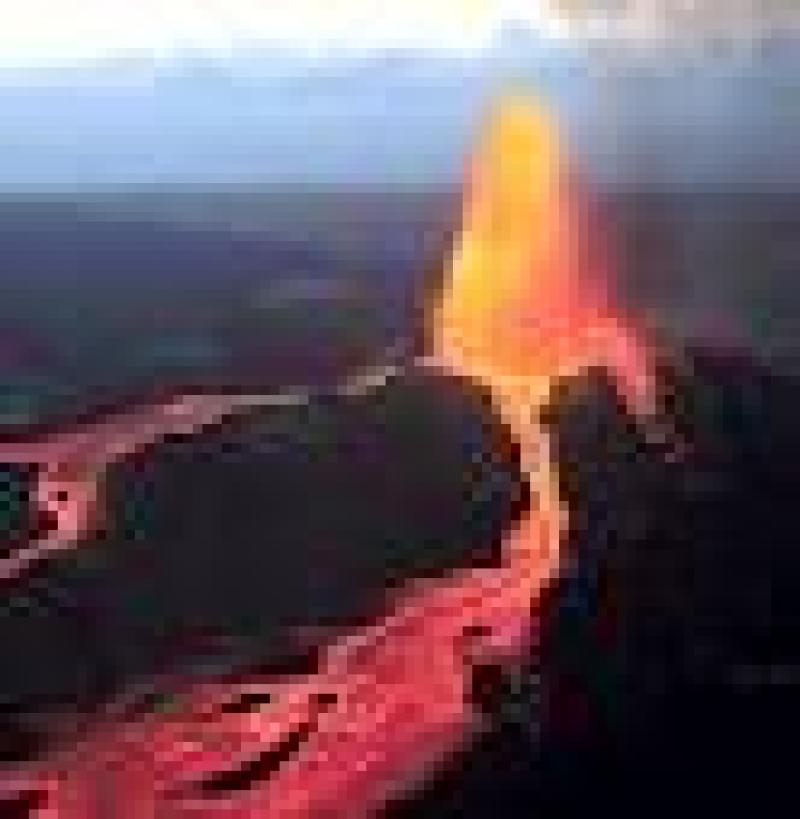Lava, acid rain, vog, sulfur dioxide and now 'laze:' New deadly threat emerges from Hawaii volcano

First it was lava, then acid rain and vog. Now, residents near Hawaii's erupting Kilauea volcano confronted a new threat Monday: laze, a toxic cloud mashup of lava and haze.
Laze forms when hot, 2,000-degree lava hits the cooler sea water. It's a hydrochloric acid steam cloud that billows into the air, along with fine particles of glass.
"Lava entering the ocean causes a chemical reaction and can result in small explosions, sending tiny particles of hydrochloric acid and volcanic glass in the air," said Jessica Johnson, a geophysicist at the University of East Anglia in the United Kingdom.
The acid in the plume is about as corrosive as diluted battery acid, scientists say. Laze can cause irritations of the skin, eyes and lungs, and those suffering from asthma or emphysema may be particularly vulnerable.
In response to the laze threat, U.S. Geological Survey scientist Wendy Stovall told residents that "if you’re feeling stinging on your skin, go inside.”
The threat is also real for mariners. “All waterway users should be aware of the hazardous conditions associated with such an event. Getting too close to the lava can result in serious injury or death,” Lt. Cmdr. John Bannon of the U.S. Coast Guard in Honolulu said in a statement.
Once formed, the effects of the laze plume are literally blowing in the wind.
Laze has been a deadly threat in the past: "This hot, corrosive gas mixture caused two deaths immediately adjacent to the coastal entry point in 2000 when seawater washed across recent and active lava flows," the Hawaii Volcano Observatory said.
Bush fires have also been reported, Johnson said, adding smoke to the airborne health hazards.
Scientists do not know how long this eruption episode, which began May 3, will last.
The volcano has opened more than 20 vents, including four that have merged into one large crack. It has been gushing lava high into the sky and sending a river of molten rock toward the ocean at about 300 yards per hour.
The rate of sulfur dioxide gas shooting from the ground fissures tripled, bringing additional air quality concerns. At the volcano’s summit, two explosive eruptions unleashed clouds of ash.
"A handful of old fissures have reactivated and joined together over the past few days," CNN correspondent Scott McLean said. "Lava is pouring out like a fountain ... feeding a fast-moving lava stream that’s now reached the ocean."
Kilauea has burned about 40 structures, including two dozen homes, since the eruption began. Nearly 3,000 earthquakes have also been recorded over the past month.
Yet, with more than 2,000 residents under evacuation, life largely goes on as normal on much of the Big Island. The tourism industry is still in full swing, and the island's airports remain open.







Man, it just keeps getting worse. I hope this eruption stalls out soon.
I hope it does, too, but scientists say it could take months for the thing to fizzle out
You build your home on an active volcano and you become surprised when all this happens? Remember, ALL of The Big Island is an active volcano. Kilauea is just a named vent off of Mauna Loa's magma chamber. To me, it would be a nice place to visit, but I wouldn't want to live there. Heck, I live in what I call "Volcano Alley", I am 2-4 hours drive away from 10 different dormant volcanoes that I can think of off-hand.
People have been living on those islands for many, many years. There's a lot of places we shuyodn't be building. Coasts, Anywhere out in the Northwest U.S., Anywhere near Yellowstone, along the Mississsippi, and on and on. When I lived in Turkey, earthquakes were quite common place.
Yellowstone will be WAY bigger and badder when it blows again. It's kinda overdue according the dates of previous eruptions. It's a calculated risk and people have quietly lived on the nearly flat slope of Kilauea for decades in the neighborhood where the fissures are now erupting. They are 20+ miles from the main vent but lava has a nasty habit of running for miles in the lava tubes because it is insulated from being exposed to the cooling air.
I'm not saying we shouldn't be building there; but we shouldn't be shocked when we build there and something like this happens. We know what happens to a volcano during an eruption, ala Vesuvius, Kilauea, Mt. St. Helens, Mount Etna, etc.
Should I feel guilty that I'm listening to "Pyroclastic Annihilation" by Demolition Hammer?
Just go with the Pyroclastic Flow....